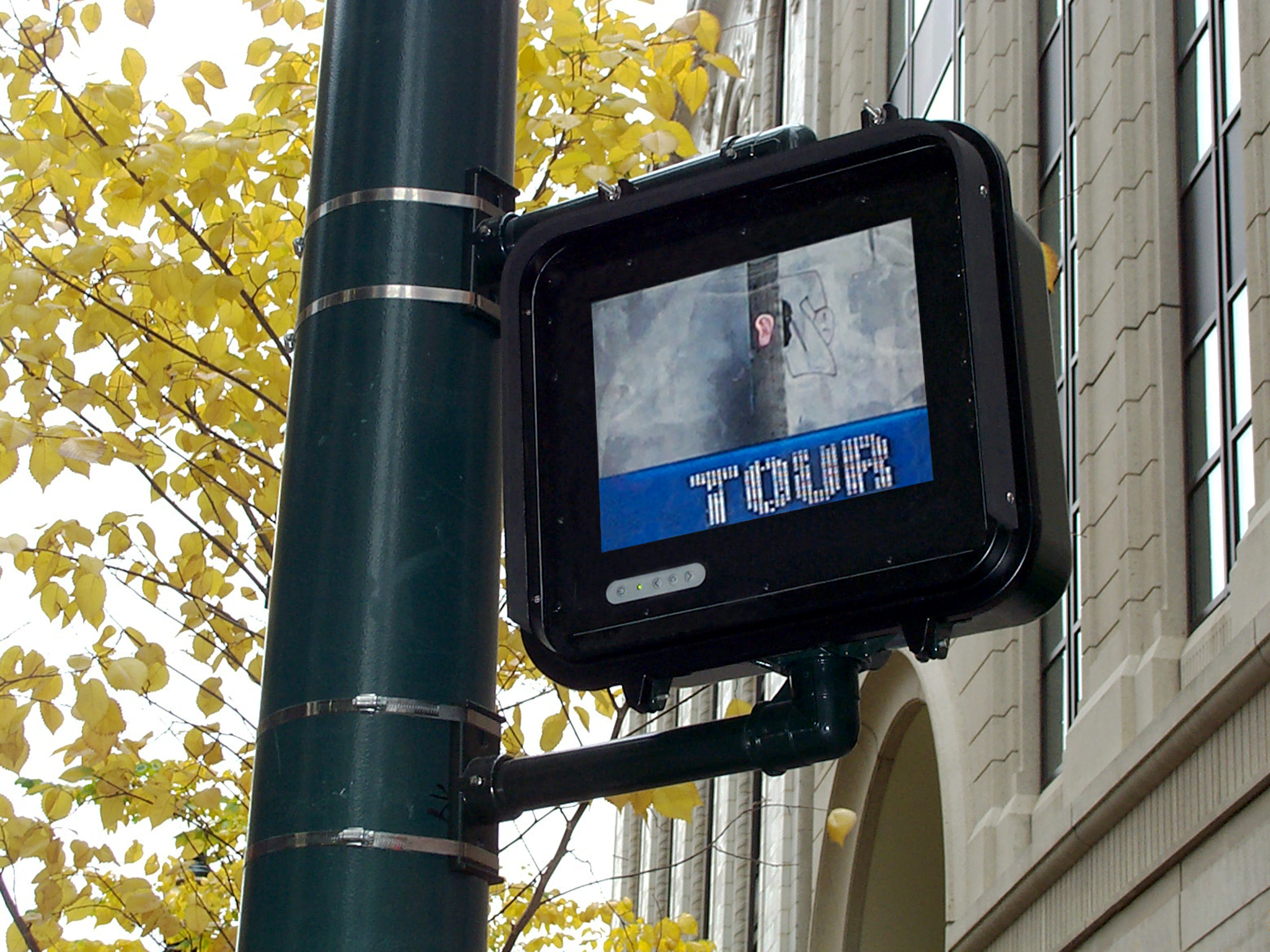
The Signals Art Pavilion was developed as an innovative approach to disseminating contemporary video art throughout the streets of Calgary, Canada. The work was awarded first prize in an international competition, and was commissioned for Calgary’s annual ArtCITY arts festival soon thereafter.
Signals is installed at the very core of the city. The pavilion consists of a monitor and a DVD player that are housed within a modified pedestrian crosswalk signal. Pivoting arms enable the pavilion to be adjusted for optimal viewing and a remote control provides the curator with a means to operate the system. As the Signals system is modular, it can easily scale up by adding more units to the network at a variety of locations, propagating art throughout downtown and beyond, all day and all night.
Here, art is the signal.
Signals was designed to be a temporary installation that would operate continuously throughout the festival. It was always meant to be dismantled after the festivities were over, and its messages were delivered. Nevertheless, Signals was conceived as a work that would belong to the citizens of Calgary and would mark their commitment to the arts by becoming part of the very infrastructure that supports life and movement in the city. It was accessible to all. Its electricity was paid for by all. And through its re-installation during future festivals, it represents a civic commitment to the arts that is reaffirmed every year, during the ArtCITY festival.
Here’s how Peter Yeadon reminisced about the origins of the project, for Canadian Architect magazine:
When I entered the City of Graz last year, I immediately noticed the acid-green signs that read “Graz – who would have guessed?” I was a little amused by the question and was reminded of my arrival at Nothing, Arizona, where the sign at the town limits declared “We Are Nothing (pop. 4).” I’m easily attracted to towns that doubt their abilities, as if they would make good friends. However, Nothing wasn’t friendly and, fortunately, Graz wasn’t Nothing. The city was designated the Cultural Capital of Europe for 2003. Before 2003, Graz called itself “Austria’s secret love”, so I was delighted to be in the city to celebrate its coming-out. Graz! Who would have guessed?
I stayed at the Hotel Mariahilf, which is a lovely little hotel adjacent to Peter Cook’s Kunsthaus Graz. The Kunsthaus is one of many spectacular facilities, such as Acconci’s Island on the Mur, that were built to present the works of contemporary artists. However the venues that were most captivating were the taxis, not the heroic works of architecture. If one dialed 878-ART-TAXI, they could hire a taxi and enjoy video art on a little monitor that was situated in the rear of the cab.
When the Visual Art Week Society launched an international competition for a new pavilion that was to present contemporary art during its 2004 ArtCity festival, their objective was to bring art to the streets of Calgary. Like the Art Taxi project, the Signals pavilion was developed as an innovative approach to disseminating video art to pedestrians. The pavilion consists of a monitor and a DVD player that are housed within a modified pedestrian crosswalk signal, whereby the art is the signal.
Excerpt from “Crosswatch” by Peter Yeadon, published by Canadian Architect magazine
